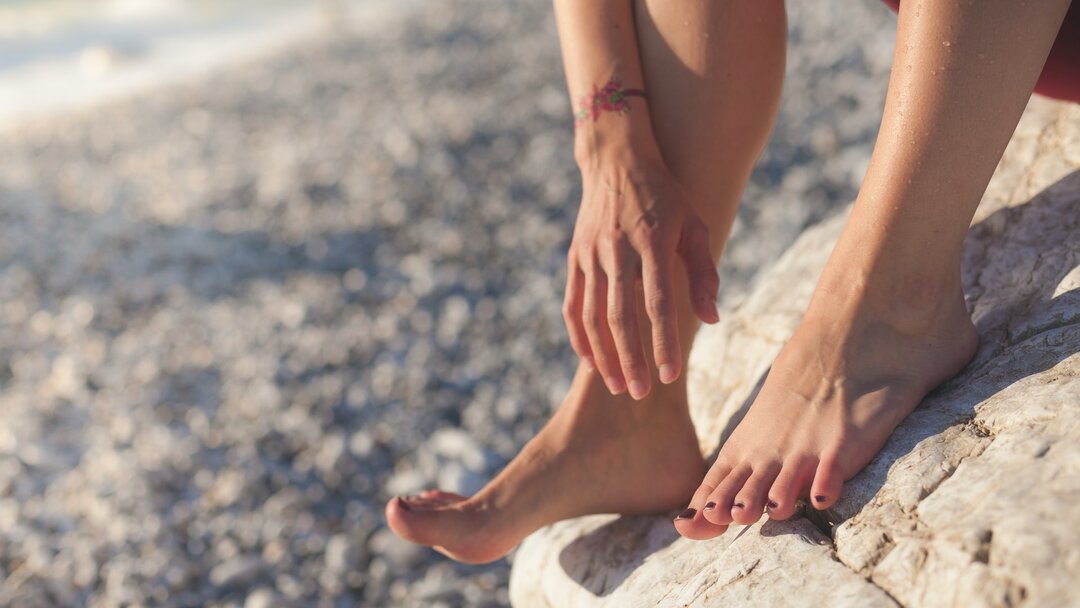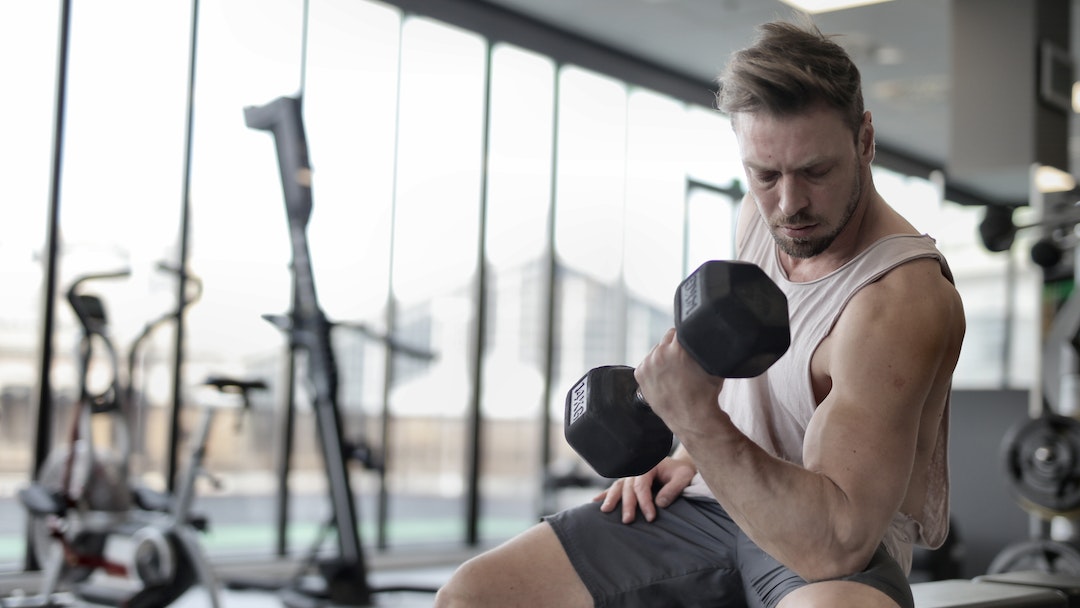Do your heels hurt in the morning when you wake up? Are you experiencing sharp pain under your feet after a long day or hard workout? You may have plantar fasciitis or bone spurs on your heel bone. Over 2 million people need to be treated for it every year. We’ll explain what plantar fasciitis is, what causes it to become inflamed, and how to treat it.
What is Plantar Fasciitis?
The plantar fascia is the fibrous, long, thin ligament that connects your heel bone to the base of your toes. This ligament is essential for supporting the foot arch and absorbing shock when you step. If this connective tissue tears from stress, tension, or heel spurs, it can become inflamed and excruciating. This inflammation is known as plantar fasciitis.
The inflammation can create stabbing pain when you first try to walk in the morning. The pain generally subsides as you move more, but it can act up after long periods of standing or sitting. If left untreated, the inflammation can cause bone spurs to form.
Symptoms of Plantar Fasciitis
The main symptoms of plantar fasciitis include:
- Inflammation of the plantar fascia tissue.
- Stabbing or sharp pain in the bottom of your heel or foot.
- Pain within the first few steps after sleeping, resting, or sitting for a prolonged period of time.
- Pain relents after a few minutes of walking.
- Sharper pain after exercise or vigorous physical activity.
- Pain increases when you flex your foot but improves when you point your toes.
- The ankle has limited “up” motion.
These plantar fasciitis symptoms, if left untreated, can lead to chronic heel pain that might aggravate the condition and develop issues in your foot, knee, hip, or back.
Related Link: How to Treat Iliotibial Band Syndrome
Bone Spurs
These are calcium deposits that build on the underside of the heel bone from months of foot muscle strain and tears. Bone spurs can aggravate the plantar fascia tissue, creating sharp pain in your heel when you walk or stand.
What Causes Plantar Fasciitis?
Several factors can cause tears in the plantar fascia tissue:
- Age: People between the ages of 40 – 60 can develop plantar fascia tears because the tissue loses flexibility and thins the fat pad protecting the heel.
- Exercise: Exercise and physical activities that put stress on your heels can cause inflammation. The most common activities it is associated with are long-distance running, aerobic dancing, and ballet dancing.
- Walking Pattern and Foot Mechanics: People with flat feet, higher arches, or an unusual walking pattern can place added stress and cause plantar fasciitis.
- Obesity: People who are obese in weight also add stress and tension that can tear the tissue.
- Occupation: Jobs that require you to be on your feet for long hours or do a considerable amount of walking or standing on hard surfaces can cause inflammation of the plantar fascia.
- Poor Fitted Shoes: Shoes that are severely worn or ill-fitted, especially lacking arch support, can cause tears and inflammation.
Want a topical solution that can help with bone spurs and plantar fasciitis? Learn more about Herbal Ice’s doctor-developed, natural formulation.
Related Link: Best CBD Products for Nerve Pain

Treatment for Plantar Fasciitis and Bone Spurs
Unfortunately, rest does not seem to help plantar fasciitis and bone spurs because the tissue becomes more stiff and elongated from inactivity, which pulls on the heel and hurts. You’ll want to continue walking but not extensively because that can also contribute to inflammation.
If you’ve been experiencing heel pain for over a month, you’ll want to talk to your doctor because they will be able to recommend different treatment options.
Non-Surgical Options
Your doctor may recommend these non-surgical options to treat plantar fasciitis and bone spurs:
- Taking a break from athletic activities.
- Icing your foot for twenty minutes, several times a day.
- Stretching exercises
- Orthopedic shoes or shoe inserts with better support
- Taping the stressed muscles and tendons to provide additional support.
- Splints to wear at night
- Physical therapy
- Corticosteroid injections
- Extracorporeal shockwave therapy (ESWT)
- Orthotic device to correct any biomechanical imbalance
Another non-surgical option is to use the Herbal Ice Hemp Muscle Rub. Our Hemp Muscle Rub combines Chinese herbs, 500 mg of hemp isolate, and cooling menthol for a topical pain relief supplement. The roll-on topical applies easily for improved absorption into the inflamed tissue.
The doctor-formulated Hemp Muscle Rub contains only natural ingredients that are lab tested for potency and quality. A well-rated topical, Hemp Muscle Rub, may help reduce inflammation and pain in your foot, providing fast-acting relief, and you don’t need a prescription to buy it.
Surgical Options
While most people suffering from bone spurs or plantar fasciitis can heal from non-surgical treatment, some may need surgery to eliminate bone spurs and restore mobility. Surgery requires releasing the plantar fascia and removing the calcium build-up on the heel bone. Post-surgery, you’ll need to continue to:
- Rest
- Ice the foot
- Wear a compression sleeve
- Elevate the foot as much as possible
- Keep weight off until it heals completely
The surgery does have some risks of complication, such as:
- Nerve pain or damage
- Permanent numbness in the heel
- Infection
- Scarring
- Instability
- Foot cramps
- Tendinitis
- Stress fractures
Because of these risks, your doctor may wait a year from first diagnosing the problem to perform surgery, depending on the severity. Healing without surgery is the preferred method.

How to Prevent Bone Spurs and Plantar Fasciitis Inflammation
If your exercise routine, weight, age, or occupation may increase your chances of developing bone spurs and plantar fasciitis, you may want to begin these preventive measures:
- Wear well-fitting shoes with sufficient arch support
- Get shoes with shock-absorbent soles, supportive heels, and firm shanks.
- Stretch and warm-up before physical activity and exercise
- Pace yourself, and don’t overdo it.
- Maintain an average body weight
- Use topical or oral supplements to relieve inflammation after activity.
Herbal Ice combines the healing power of traditional topical herbs with hemp extract to create an affordable, easy-to-apply solution to help with muscle pain and inflammation.
Want an all-natural, topical supplement to help with muscle pain in your feet and heels? Shop our best-selling products.
Related Link: Best CBD Muscle Rubs on the Market



